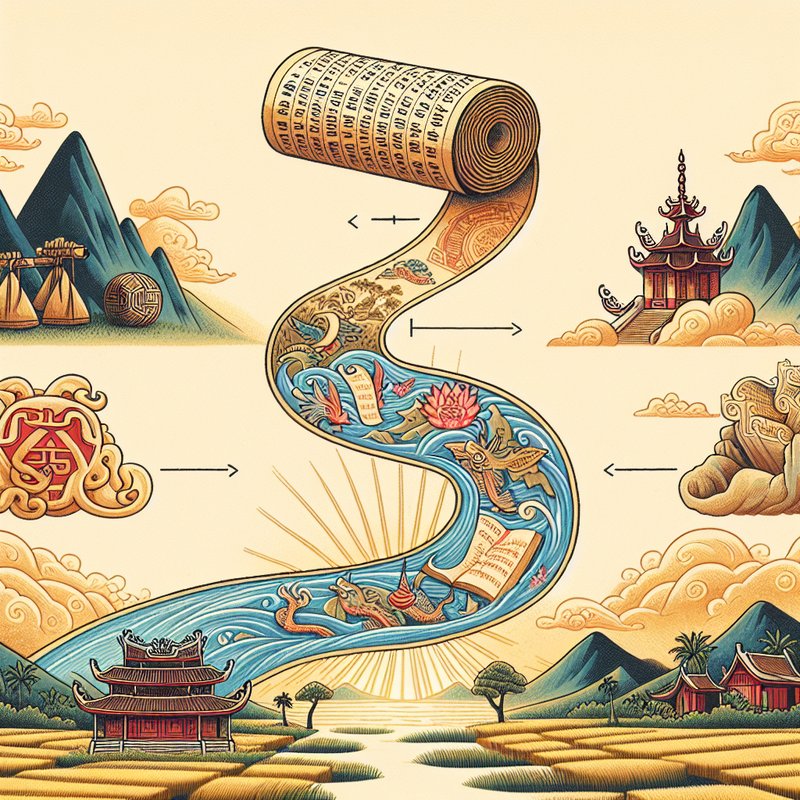The Historical Evolution of the Vietnamese Language

The Vietnamese language has a rich and complex history, tracing its roots back to the Austroasiatic language family. Over the centuries, it has been influenced by various cultures, including Chinese, French, and American, each leaving its mark on the language.
From the use of classical Chinese during the early dynasties to the adoption of the Latin alphabet under French colonial rule, the evolution of the Vietnamese language reflects the country’s dynamic history. This section will delve into the key historical milestones that have shaped the language.
Diverse Dialects Across Regions

Vietnam is home to a variety of regional dialects, each with its unique pronunciation, vocabulary, and expressions. The three main dialect regions are Northern, Central, and Southern Vietnam, and within these, there are further subdivisions that add to the linguistic diversity.
The Vietnamese language, known for its melodic tones and distinct sounds, is characterized by a variety of regional dialects that offer a window into the rich cultural and historical mosaic of Vietnam. Broadly speaking, there are three primary dialect regions: Northern, Central, and Southern Vietnam. Each of these regions boasts unique linguistic features that reflect their individual histories, cultural influences, and social dynamics.
The Northern dialect, often considered the standard form of Vietnamese, is predominantly spoken in the Red River Delta, including the capital city, Hanoi. This dialect is known for its clear enunciation and relatively simple tone system, which makes it the preferred form for official communication and media. The historical significance of the Northern dialect is underscored by Hanoi’s status as the political and cultural heart of Vietnam for centuries.
In contrast, the Central dialect, spoken in regions such as Hue and Da Nang, is marked by its more complex tone system and distinct pronunciation. The Central region has a rich history as the seat of the Nguyen Dynasty, and this historical backdrop is reflected in the dialect’s features. The influence of the ancient imperial court can still be heard in the formal and often poetic nuances of the Central dialect, making it a vital part of Vietnam’s linguistic heritage.
Meanwhile, the Southern dialect, common in the Mekong Delta and Ho Chi Minh City, is distinguished by its relaxed intonation and variation in vowel pronunciation. The Southern region’s history as a melting pot of different cultures, including Khmer and Chinese, has contributed to the linguistic diversity of this dialect. The Southern dialect’s informal and adaptive nature mirrors the dynamic and entrepreneurial spirit of Ho Chi Minh City, Vietnam’s economic hub.
Each dialect not only represents a geographical area but also encapsulates the local culture and history, offering a unique perspective on the Vietnamese way of life. Understanding these regional variations provides invaluable insights into Vietnam’s diverse cultural landscape, highlighting how language can both unite and distinguish different communities within the same nation.
Cultural Significance and Modern Usage

The Vietnamese language plays a crucial role in the country’s cultural identity, serving as a medium for literature, music, and everyday communication. It is a symbol of national pride and unity, reflecting the resilience and creativity of the Vietnamese people.
In modern times, the Vietnamese language continues to evolve, adapting to contemporary influences and the demands of globalization. The increased connectivity of our world means that languages are in constant interaction, and Vietnamese is no exception. The internet, social media, and international travel have all contributed to the infusion of new vocabulary and expressions into everyday Vietnamese speech. Moreover, the influence of popular culture, particularly from English-speaking countries, is evident in the adoption of loanwords and slang.
Despite these changes, there is a strong movement to preserve the purity and cultural significance of the Vietnamese language. Educational institutions, government bodies, and cultural organizations are actively promoting Vietnamese literacy and heritage. Efforts include the integration of traditional literature and historical texts into school curriculums, the celebration of Vietnamese Language Day, and the development of software and applications that support the learning and use of Vietnamese in the digital realm.
The role of the Vietnamese language in modern society cannot be understated. It serves as a vital link to the nation’s rich cultural past while simultaneously evolving to meet the needs of a globalized future. The blending of traditional and modern elements in the language showcases the resilience and adaptability of the Vietnamese people, reflecting a cultural identity that is both proud of its heritage and open to the world.

Leave a Reply